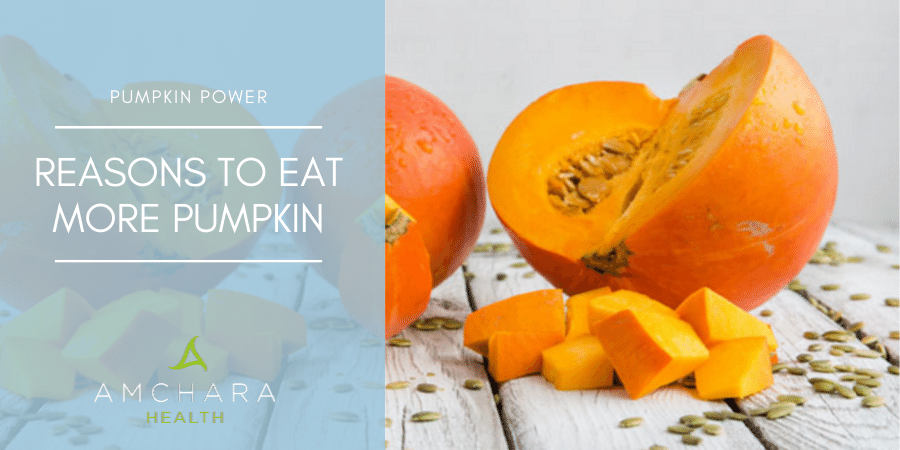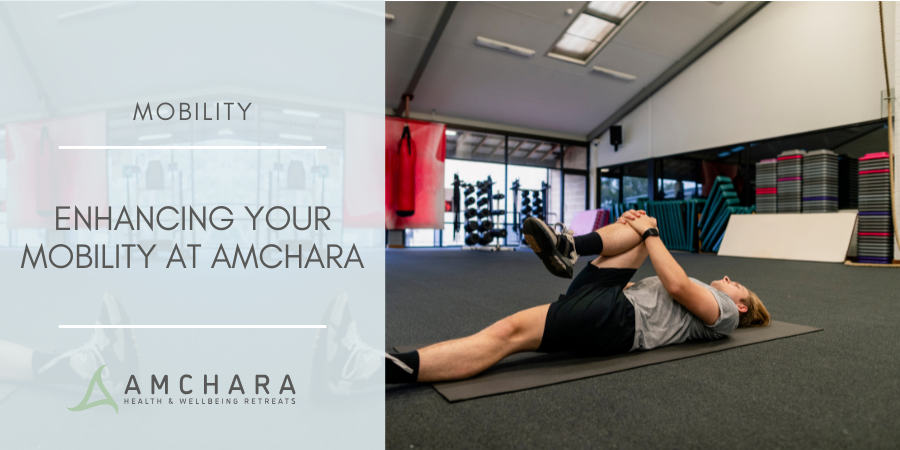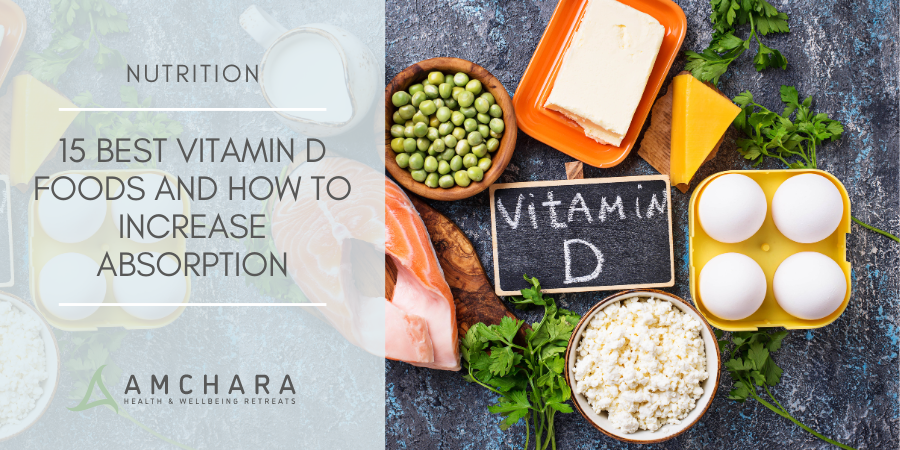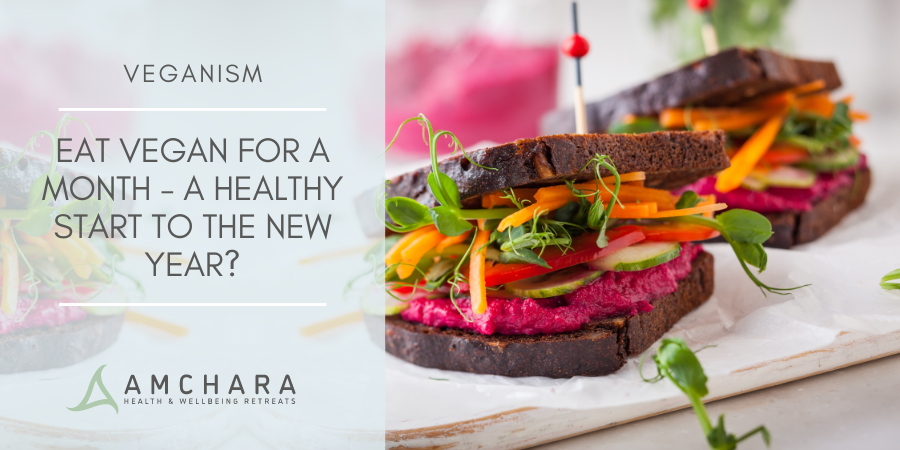Once Autumn is in full swing one of the best foods that you can eat is pumpkin.
It can help to protect:
- the bladder and prostate
- treat depression
- prevent osteoporosis
- treat parasites
So add a good dose of pumpkin seeds and pumpkin flesh into your diet this Autumn while it’s readily available.
Table of Contenst:
- How can I eat pumpkin and pumpkin seeds?
- What’s so great about pumpkins?
- What can I do with my pumpkin?
- The health benefits
- Types of pumpkin and squash
- Sweet roasted pumpkin soup
- Pumpkin and carrot juice recipe
Pumpkin flesh is full of goodness, containing essential vitamins, minerals, antioxidants, and fibre.(1) It is packed with vitamin A and is also a good source of vitamins C, E & K, as well as antioxidant carotenoids, particularly alpha and beta carotenes and minerals such as potassium, magnesium and iron.
The seeds are fantastic too.
The seeds, called pepitas, are full of minerals and are well known for their anti-inflammatory effects as well as providing protection against osteoporosis and prostate cancer.
Soak pumpkin seeds in water for 8-12 hours before you eat them to neutralise the action of enzyme inhibitors. These have an important role for the seeds and how they work to grow into plants, as they prevent a seed from sprouting prematurely, however they can put tension on your digestive system.
Enzyme inhibitors are tiny molecules that interact with enzymes in your body and prevent them from working correctly. By soaking the pumpkin seeds in water, enzyme inhibitors are neutralized and beneficial enzymes are encouraged.
Remember to rinse the seeds well after soaking as the water around them is acidic. You can then use them immediately or dehydrate them and store them. If you store them without drying them they will go mouldy.
How can I eat pumpkin and pumpkin seeds?
Pumpkin is quite filling so you could have a good serving instead of meat as part of a healthy vegan diet.
Pumpkin can be kept for 6 months whole and you can buy pumpkin seeds from health food shops throughout the year.
You could have a warm pumpkin salad with cubes of pumpkin flesh, rocket leaves, and pumpkin seeds. You can also stuff and bake it – just hollow the seeds out of a small pumpkin, stuff it with bread, roasted garlic, spices, and soya cream, put the lid back on and bake at 190ºc on a large tray with the seeds spread around the bottom for 30 minutes. When it’s cooked, serve it up on a large plate, slice and serve.
Another great way to eat pumpkin is to have a pumpkin stir fry – include healthy vegetables for a delicious nutrient-dense winter meal.
What’s so great about pumpkins?
Pumpkins are a member of the squash family and are full of nutrients that play important roles within the body:
- Carotenoids – a wide variety from lutein to beta carotene. In fact, pumpkin made it into the top three food sources for these health supporting antioxidants.
- Pectin – this is a starchy source of fibre from the cell walls of the plant. It has shown anti-inflammatory, as well as anti-diabetic and insulin-regulating properties.
- Vitamin C – 200g of pumpkin contains over a quarter of our daily recommendation. Vitamin C is vital for a healthy immune system, brain health and acts a potent antioxidant within the body.
- B vitamins – pumpkins contain vitamin B2, B3, B5 and B6 which contribute towards nerve and muscle health as well as providing us with energy throughout the day.
- Zinc – it’s not only the flesh of the pumpkin that contains beneficial nutrients, the seeds inside the pumpkin contain high levels of zinc. This mineral is a key factor in the healthy regulation of immunity, reproduction, skin and eye health.
What can I do with my pumpkin?
Pumpkins are incredibly versatile – here are just a few suggestions on how to make the most out of your pumpkin after Halloween.
- Roast wedges of pumpkin. After peeling the tough skin and scooping out the seeds (keep for later!), chop into wedges and coat in coconut oil, sprinkle with paprika, cinnamon and salt and pepper and roast for around 30 mins or until soft.
- Creamy pumpkin mash. Again, peel and remove the seeds before chopping into bite-size chunks and boiling in water and a pinch of salt. When soft, mash with butter, olive, and seasoning for a wonderful side dish.
- Spicy roasted pumpkin seeds. These make for a delicious snack, crunchy and flavoursome. First, rinse the seeds to get rid of any residual flesh, then lay on a baking tray, drizzle with olive oil and season with any spices and herbs you fancy. Chilli, fennel and cumin all work well. Roast at 180oC for 10 mins or until golden brown. Eat as a snack or sprinkle on top of salads or other dishes.
- Make pumpkin brownies (yes really!). These are such a revelation and a wonderful treat. Boil around 600g of pumpkin flesh until soft. Add 1 cup of ground almonds, 1/2 cup of flour of your choice, 12 medjool dates, 2 eggs, 4 tbsps of raw cacao, 3 tbsps of maple syrup and a pinch of salt. Blitz all the ingredients, spread into a baking tray and cook for around 20 mins.
So before reaching for the nearest bin on the 1st November, take a little thought and time to make use of your Jack O’Lantern and transform it into something delicious and nutritious!
The health benefits
The health benefits of pumpkin and squash
Pumpkin and squash contain very few calories, with 100g of pumpkin containing as little as 25 calories.
You won’t find any saturated fats in there either, nor any cholesterol – this is why pumpkin is so recommended for weight loss and cholesterol management.
Pumpkin and squash is also a very powerful antioxidant rich food containing cancer fighting flavanoids.
It is also rich in vitamins A, C and E. Vitamin A is another antioxidant and aids healthy vision, keeps the skin healthy and protecting against certain cancers, including lung and some oral cancers.
Pumpkin and squash also contain high levels of the B-complex vitamins, essential for many functions within the body.
If you eat pumpkin with the seeds too, there are even more benefits to enjoy.
Pumpkin seeds contain plenty of omega-3 fatty acids, essential for a healthy heart and cardiovascular system, while the high content of fibre helps to keep your digestive system healthy.
100g of the seeds also contains more than 100% of the RDA of iron and over 70% of the RDA of zinc.
Types of pumpkin and squash
BLUE HOKKAIDO PUMPKIN – this variety has a blue-green misty skin with a brilliant orange centre that tastes nutty and rich. It is one of the tastiest types of pumpkin, especially roasted with a dash of salt.
CHEESE PUMPKIN – probably the most commonly used image when it comes to Halloween due to its beautifully distinctive, bubbly shape. These have a very lovely sweet taste and the firmness of the flesh – perfect for roasting.
RED KURI PUMPKIN – a beautiful, fiery, red skinned pumpkin which looks more like a squash, with deep pimply ridges. The flesh is just as bright as the skin and its rich, nutty flavour makes it ideal for use in stews and vegetable curries. As these are quite small, you can also stuff and roast them with your favourite filling.
SUGAR PIE PUMPKIN – a small version of the ‘traditional’ pumpkins that you see in the supermarkets. These very sweet tasting pumpkins are ideal for desserts like warm pumpkin pie and can be hollowed and roasted with your own tasty filling.
WHITE PUMPKIN – the pure white skin of these pumpkins make them ideal for autumn decorations, however they are also fantastic roasted with other vegetables. The flesh inside the White Pumpkin has more of a yellowy tone.
ACORN SQUASH – a gorgeous sweet tasting squash with a soft and tender flesh and a beautiful mid to dark green skin. Its name comes from its shape which is reminiscent of an acorn.
BUTTERNUT SQUASH – probably the most commonly consumed squash in the UK and US. It is the sweetest of the different types of squash and is tasty mashed as an accompaniment to a meal. It can also be roasted with other winter vegetables. Just add a pinch of salt to get a slightly less sweet flavour.
DELICATA SQUASH – very pretty and small and looks like marrow. Its skin is white with mid green streaks and is edible. The flesh inside is slightly more dry than other varieties but tastes sweet. This squash doesn’t last as long as other types so you should check them for damaged skin before buying.
HUBBARD SQUASH – the largest squash that you can get with a dimply greyish green skin. The taste of this squash is similar to pumpkin and it goes beautifully in soups and stews.
SPAGHETTI SQUASH – a popular choice due to its unusual texture. When cooked right the flesh comes off in strands that resemble spaghetti, hence the name. It is sometimes served just like spaghetti with tomato sauce.
Sweet roasted pumpkin soup
A delicious (and slightly sweet) twist to pumpkin soup.
Team with raw flax crackers and you have a healthy lunch or dinner.
Created by our raw food chef at Amchara Gozo.
INGREDIENTS
- 450g roasted pumpkin
- 115g red onion, uncooked
- 6g uncooked garlic cloves
- 450g roasted apples
- 6g turmeric powder
- 6g cumin powder
- 2g fresh thyme
- 900g vegetable stock
- 20g olive oil or avocado oil
- 12g agave nectar
- 10g sea salt
- 4 cups vegetable broth
INSTRUCTIONS
- In a pan, fry garlic and onion with olive oil.
- Add salt and a little vegetable stock.
- Mix all other ingredients.
- Simmer until heated through.
- When ready, puree the soup and serve with fresh herbs.
Pumpkin and carrot juice recipe
Packed with beta carotene
Pumpkin and carrot juice is a great combination and is ideal when juice fasting. This juice is healthy and will help to keep you on top formthroughout the autumn and winter.
One of the most powerful antioxidants is beta carotene, which gives certain fruits and vegetables the yellow and orange colours. The beta carotene is the cancer fighting substance found in pumpkins. As it is also found in the carrots that are used in this recipe, you’ll get a double strength dose of cancer fighting, immune boosting ingredients.
Remember, you can also make some hearty winter soups with pumpkin and carrot if you want something a little more warming.
- Take a small pumpkin chopped into chunks
- 4-6 carrots
- 1 tablespoon of grated nutmeg
- 2 inch chunk of ginger grated
- 1/4 teaspoon of cinnamon
Place all ingredients in a blender with 1/2 pint of water and blend.
If you feel that the mixture is too thick for your liking, simply add more water to get your preferred consistency.
Then place in the fridge.
When you are ready to drink, simply add some ice cubes to a glass and serve.
If you want to make this juice sweeter, add the juice and flesh of 2 medium sized oranges
However if you have Type 2 diabetes this may not be a suitable ingredient so check with your doctor first, or drop us an email.
Do you have any top tips for how to eat pumpkin?
We’d love to hear from you, get in touch.
Read this next:






